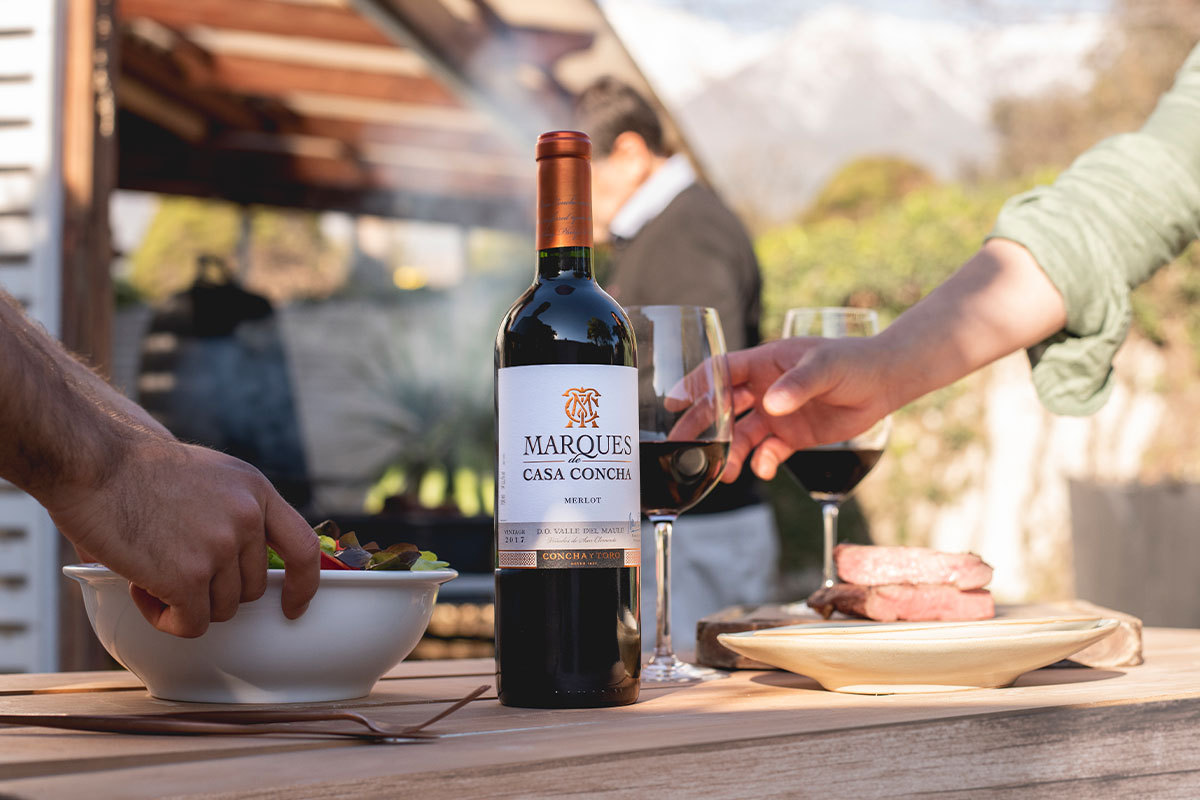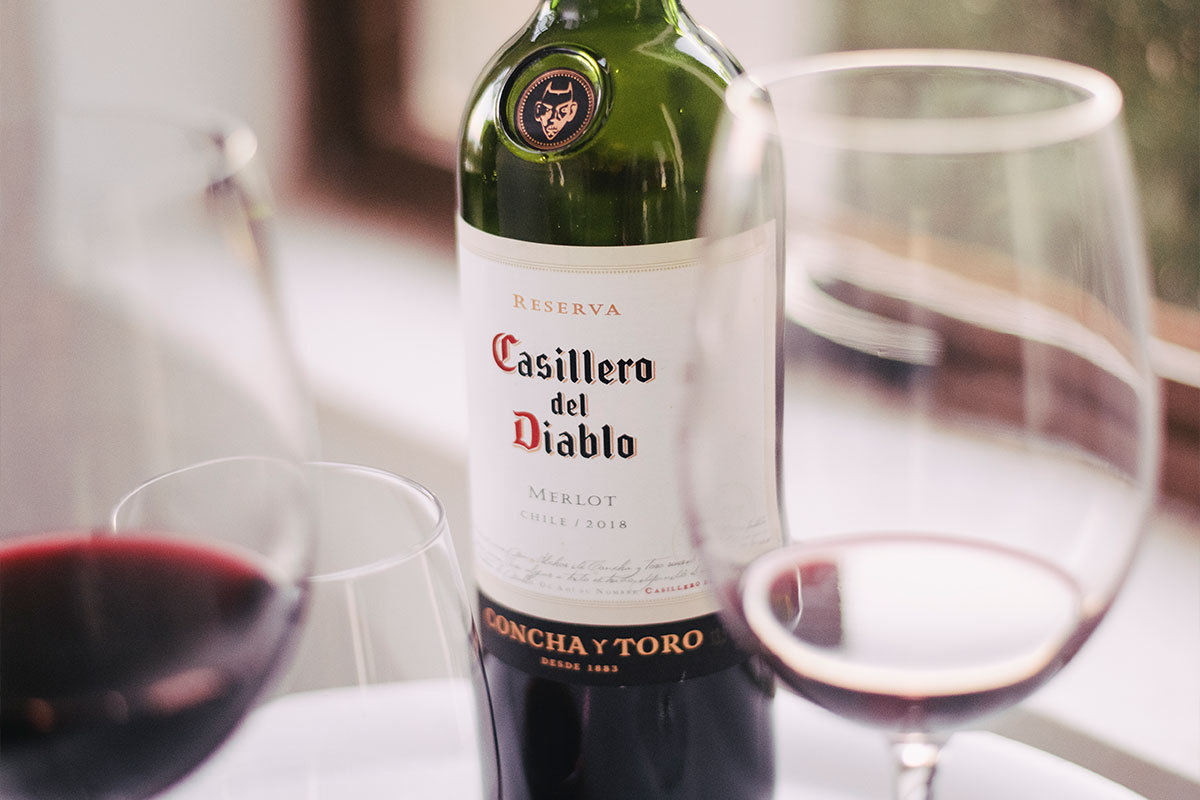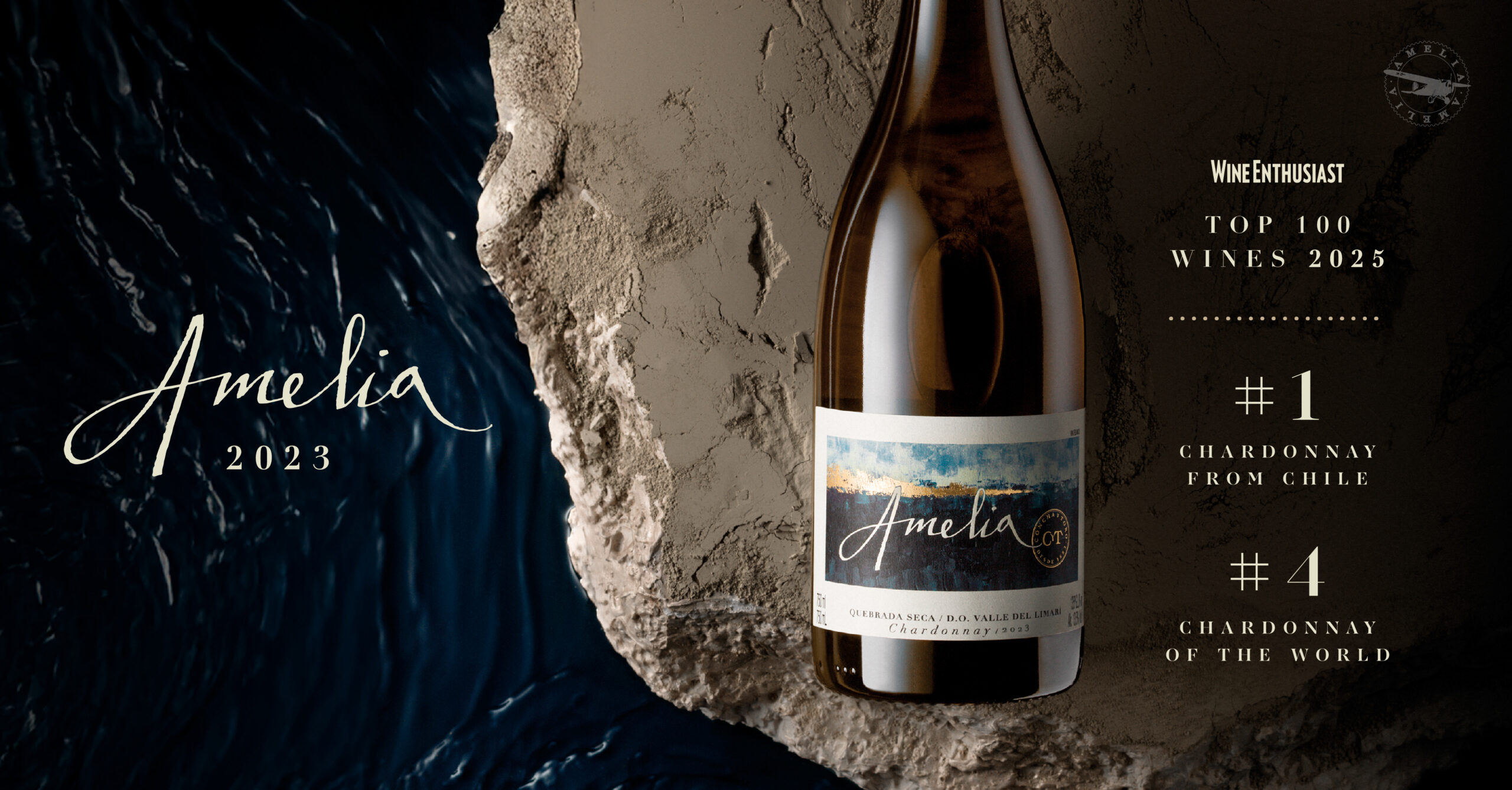11 de November de 2021
All about Merlot
Generally confused with Cabernet Sauvignon and historically used in red Bordeaux blends, the truth is that Merlot has characteristics that make it one of the favourite red varieties around the world, due to its versatility and smooth finish on the palate.
However, its luck has not been entirely good. In the case of Chile, in particular, in 1994 a French ampelographer discovered that a large part of the vines that were classified as Merlot were actually another Bordeaux variety: Carmenère. While, worldwide, many consider that the movie Sideways (2004) created a bad reputation for Merlot, promoting in turn the consumption of Pinot Noir.
Although today the story has been reversed. In fact, this past November 7th, Merlot Day was celebrated, an occasion that deserves to tell more about the qualities and virtues of this wine grape that, by the way, delivers delicious wines.
It’s taste
Merlot is characterized by its smooth texture on the palate due to its low levels of tannins. It has moderate acidity and a tremendous fruity character. With a silky finish, its flavours and aromas can vary between black fruits, chocolate and some spices, to notes of graphite, plums, cherries, herbs and violets. It is a dry, medium to full-bodied wine, although it also varies depending on the climate it comes from.
In cold climates such as Chile or France, it is characterized by more structured wines and firm tannins, with earthy flavours, sometimes delivering notes reminiscent of tobacco and figs. Marques de Casa Concha Merlot, from Maule Valley, is a great example of this style, which stands out for its aromas of black zarzaparilla, wild berries, plums and spices, with a pleasant touch of vanilla, mocha and wood that adds complexity.

While, in warmer climates, such as Argentina, Australia and California.Merlot tends to produce more fruity wines, a little less structured, which is why they tend to be aged in oak. Its aromas include raspberries, cherries and spices like cloves, in addition to those given by wood such as vanilla, coconut and chocolate.
Its colour
Merlot, when young, tends to have a bluish ruby colour that is less intense than Cabernet Sauvignon but stronger than the tone of a Pinot Noir. But as it ages, it loses its hue and begins to turn brick red.
Merlot vs Cabernet Sauvignon
Because both strains complement each other so well, they are traditionally used together in red blends. Due to the large amount of tannins in Cabernet, Merlot always comes in handy, providing its fruity and sweet side. Gravas del Maipo Cabernet Sauvignon, for example, has 2% of Merlot, it is a wine worth trying.
But at the same time, it is worth talking about the particularities that differentiate them. We already know that Merlot is more fruity and that it has less tannins. For this reason, it feels sweeter on the palate, with less volume and sometimes a bit less complex than Cabernet Sauvignon. Reasons why it is usually cheaper than Cabernet.
Food pairing
One of the greatest attributes of Merlot is its versatility when it comes to accompanying it with meals. In the case of those young, fruity and very easy to drink Merlot such as Casillero del Diablo Merlot, with medium-bodied, pleasant tannins, aromas of chocolate, plum, blackberries, hints of vanilla and smoke, that you can serve with infinite varieties of pizzas, pastas, hamburgers, red or white meats.

While a little more robust ones, such as Marques de Casa Concha Merlot, are perfect to accompany slightly more intense meals such as Casserole meats, Steak with pepper sauce, Roast duck, sautéed mushrooms, cheeses and even Creamy fish dishes.










